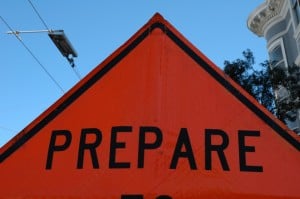by Bruce D. Groves, CIH
The Federal Advisory Council on Occupational Safety and Health (FACOSH) recently recommended to the Department of Labor that it ask the president to use his power of executive order to update OSHA's permissible exposure limits (PELs).
An executive order is a legally-binding directive from the president, requiring no house or senate approval or oversight. However, they are normally made after certain Acts of Congress grant the specific power to the executive branch of the government, and often, presidential executive orders will come under fire for circumventing the usual congressional approval.
FACOSH, which advises OSHA on safety and health matters, recommended that companies and their subcontractors be legally obligated to adhere to the latest, most protective OELs (occupational exposure limits).
According to the FACOSH Emerging Issue Subcommittee, an executive order is needed because PELs have not been updated since 1971 and do not represent over four decades-worth of new technology and toxicological research. They further note that updating the current permissible exposure limits (PELs) needs to be of utmost concern for worker safety for federal workers and contractors working on federal projectsthe only workers defined in these recommendations. The Subcommittee recommended that federal agencies and departments use the most protective and feasible OELs in federal workplaces, notwithstanding the existence of a PEL for a given substance of concern.
The American Industrial Hygiene Association (AIHA) has recently submitted a white paper stating its support for OSHA's continued role as the gatekeeper for worker safety and its support for an executive order updating PELS and itself has spent a great deal of time and money on research trying to have outdated PELs modernized.
FACOSH has tabled the proposal for now. However, it has received strong consideration from OSHA. David Michaels, Assistant Secretary of Labor for OSHA has been expressing enthusiastic backing for this effort.
Opponents to the idea of using a presidential executive feel it is an end-run around the regulatory process, noting that these more restrictive OELs could be even more rigorous than what is now required by MSHA or OSHA, and that there should be measures in place to make sure the limits are technologically and economically practicable for the companies working on federal projects.
Opponents assert that adopting OELS could open the door to adopting other exposure limits which have not gone through the rulemaking process such as NIOSHs recommended exposure limits (RELs), the American Conference of Governmental Industrial Hygienists threshold limit values (ACGIH TLVs), the American Industrial Hygiene Associations workplace environmental exposure limits (WEELs).
It is my opinion that (regardless of which side of the fence you might sit on this issue) a couple facts remain:
- Many of the PELs are 40+ years old and much more data and information has been gathered during this time that may influence people conducting health hazard assessments. The irony is that PELs for most industrial hygienists are not used exclusively because they are often out of date with current science. TLVs and other OELs are commonly used today by H&S practitioners in designing controls to reduce exposure to safe levels.
- Some of the current OELs, (e.g. some NIOSH RELs) seem too low, too restrictive, or not reasonable when evaluating the total risk and exposure to some workers. I often use professional judgment in selecting an OEL that is not the most restrictive as a guide to protecting workers who are performing specific tasks, using specific materials, and for varying durations. OELs do not always work as an arbitrary not to exceed limit. Accepting, carte blanche, the most restrictive OEL will reduce some current PELs significantly, but add considerable cost to a company or agency often without gaining appreciable benefits.
- Funds and resources are finite and should be parceled out by H&S professionals to get the best result! Spending money to meet the needs of a blanket mandate, without evaluating the need or benefit, will take resources away from other initiatives that will or may be more effective in protecting workers.
.
I am personally against an executive order to update all the PELs. I am not convinced that the reduction of PELs in and of itself will significantly reduce exposures to various chemicals and reduce disease. However, I understand the frustration of many H&S practitioners in having PELs that are clearly out of date.












